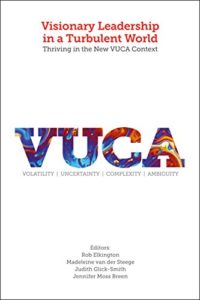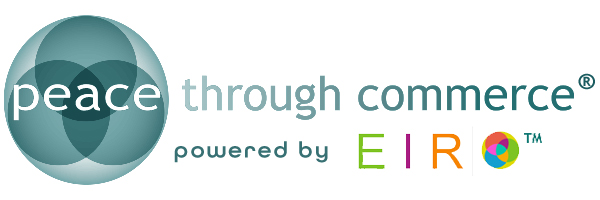What does it mean to be a leader in 2017? Fred Krawchuk, one of our board members, seeks to answer that question in a chapter to a new business leadership book entitled: Visionary Leadership in a Turbulent World: Thriving in the New VUCA Context.
Fred provides a practical framework to help leaders address complex challenges by collaborating across government, business, and civic sectors in a dynamic environment. Based on his experiences in working in over thirty countries – to include conflict zones – he shows how effective collaboration in a fast-moving VUCA (volatile, uncertain, complex, and ambiguous) world is a competitive advantage for any organization.
In his chapter, he writes about the the features that successful collaborative initiatives commonly share, including:
- Purpose: A specific issue, challenge, opportunity, or possibility that concerns all stakeholders and provides a unifying reason for collaboration
- People: A collaborative mindset that embraces flexibility, adaptability, and paradox
- Place: An inclusive platform where participants meet in person (and, as needed, virtually) for the sake of dialogue
- Process: A process of shared inquiry, network-building, problem-solving, and decision-making that addresses stakeholder concerns
- Practice: The efforts made on a regular basis by stakeholders to train and develop the skill sets of collaboration
To help put this framework into action and bolster an enterprise’s ability to be agile in a fast-moving environment, he recommends that leaders:
- Develop a shared understanding of the environment, the context of the challenge you face, and an overarching purpose within your organization
- Recruit and select managers with a collaborative mindset
- Train managers in collaborative skills (such as negotiations, dialogue, and/or design thinking)
- Develop a flat network – a “team of teams” – within your organization and with key stakeholders outside of formal boundaries
- Create a safe and supportive environment where people can take risks and build relationships with diverse stakeholders
 According to Fred, managing a collaborative enterprise is like leading an orchestra. Depending on what is needed, leaders will call upon different arrangements of the components mentioned above. When managers conduct the instruments of collaboration in concert with each other they discover common ground, break down silos, create high-trust relationships, and build nimble networks that are primed for effective action. Fred lends his expertise and experience to PTC’s peacebuilding framework, the Matrix of Peace, which strives to create collaborative solutions to challenges that can enable peace and prosperity. We are grateful to have his leadership engaged in our work.
According to Fred, managing a collaborative enterprise is like leading an orchestra. Depending on what is needed, leaders will call upon different arrangements of the components mentioned above. When managers conduct the instruments of collaboration in concert with each other they discover common ground, break down silos, create high-trust relationships, and build nimble networks that are primed for effective action. Fred lends his expertise and experience to PTC’s peacebuilding framework, the Matrix of Peace, which strives to create collaborative solutions to challenges that can enable peace and prosperity. We are grateful to have his leadership engaged in our work.
